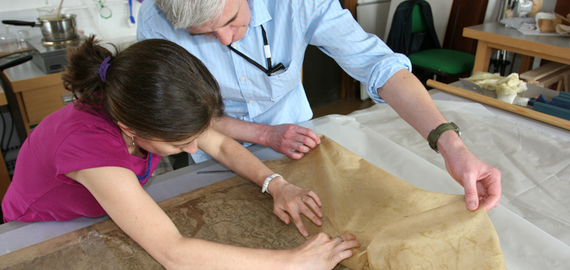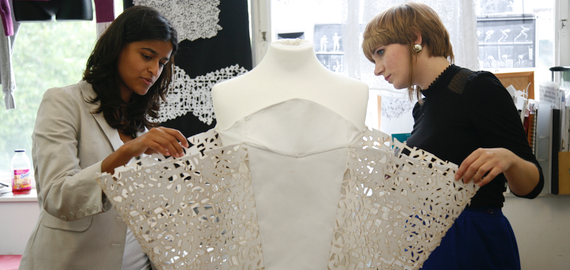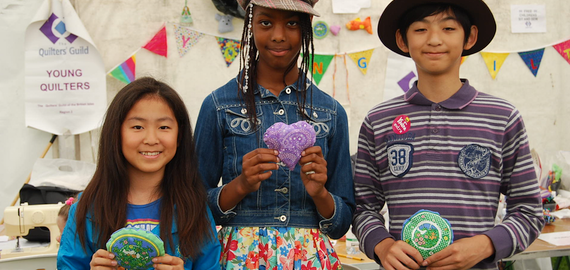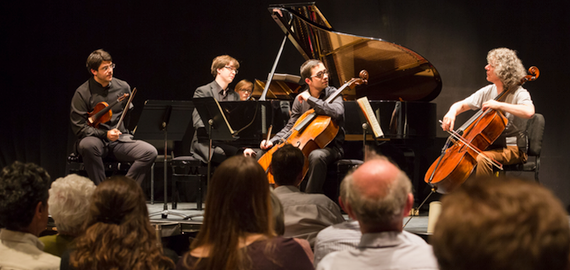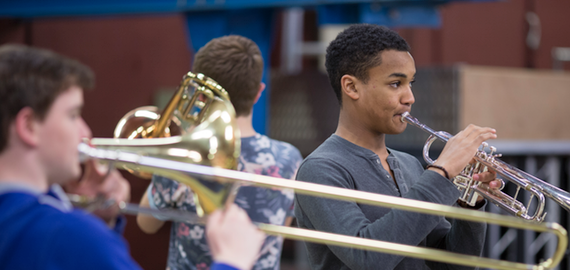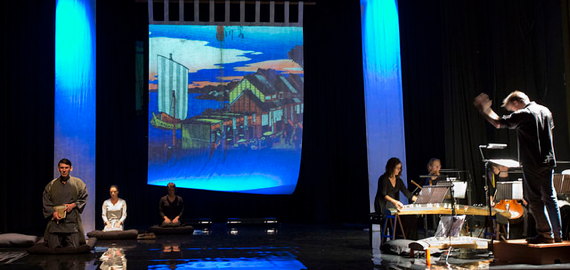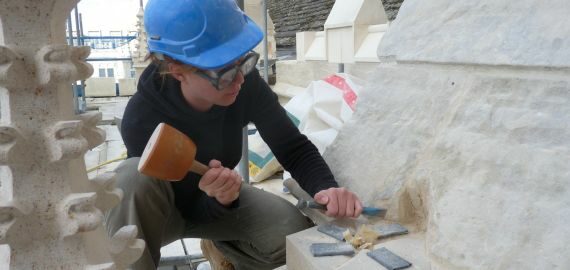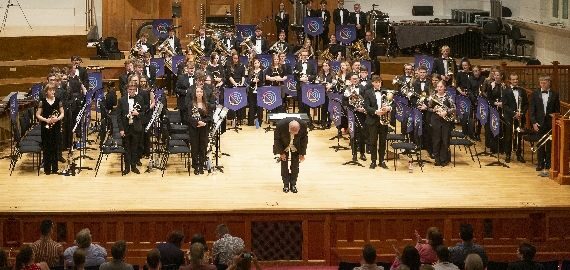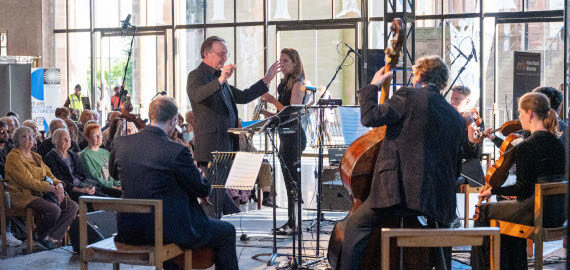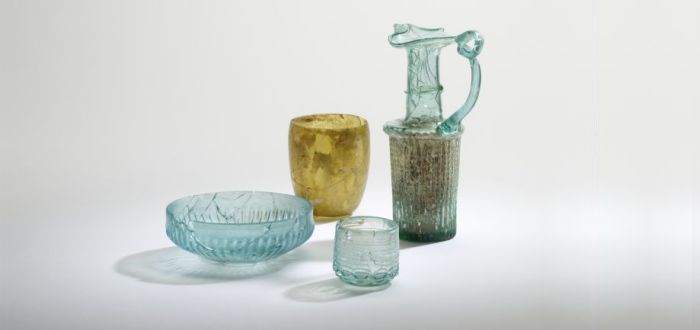Wentworth Woodhouse
 Wentworth Woodhouse is one of the largest houses in Europe, it is a Grade I listed country house in the village of Wentworth, South Yorkshire. It was built between 1725 and 1750 and is currently owned by Wentworth Woodhouse Preservation Trust, who aim to use the restoration as a catalyst for positive change in South Yorkshire.
Wentworth Woodhouse is one of the largest houses in Europe, it is a Grade I listed country house in the village of Wentworth, South Yorkshire. It was built between 1725 and 1750 and is currently owned by Wentworth Woodhouse Preservation Trust, who aim to use the restoration as a catalyst for positive change in South Yorkshire.
Read more about The Wentworth Woodhouse Preservation Trust.
The Fruitmarket Gallery
The Fruitmarket Gallery is one of Scotland’s leading contemporary art venues; open seven days a week and completely free to visit. Artists and audiences are enabled to create and experience extraordinary work across art-forms through a diverse, international programme of artistically excellent exhibitions, public commissions, and an annual festival of new music commissions and live performances.
In 2021, The Fruitmarket Gallery expanded their cultural footprint, launching a new venue for live music in Edinburgh; the Fruitmarket Warehouse. The Fruitmarket Warehouse has transformed the cultural landscape of the city, supporting musicians to develop and present new work, and enabling audiences of 144,000 people to experience extraordinary live work for free.

Music is a major part of The Fruitmarket Gallery’s annual programme and has garnered a reputation for supporting Scottish musicians early and at mid-career.
The Radcliffe Trust grant in 2024 was used to support the commission and performance fees across the 2024 edition of Deep Time, The Fruitmarket’s pioneering Festival of New Music, which took place across four nights in November 2024. With the Trust’s support, four new works were commissioned by radical, experimental music composers and musicians at crucial stages in their career. The commissioned artists all benefitted from the opportunity to respond to a rich theme, exploring the continuing relevance and legacy of John Cage and Jean-Michel Basquiat’s experimentation in music, composition and art, acting as a vehicle for them to research, develop and produce new work. The grant enabled artists to present and develop their work for Scottish audiences for the first time. It also extended the reach and the legacy of each artist’s practice with recordings of the newly commissioned works and performances at the Barbican in April 2025.
Whitchurch Silk Mill – George Washington
Whitchurch Silk Mill has been open as a living museum since 1990, under the management of Whitchurch Silk Mill Trust, to ensure the survival of silk weaving using traditional machinery and methods. The mill’s collections span over 200 years and about 5,000 objects and tell the story of 200 years of silk making in Whitchurch.
The Radcliffe Trust gave a grant to Whitchurch Silk Mill for their Heritage Weaving Program which offers a 12-month post to a graduate in textiles. Whitchurch Silk Mill aims to address the national critical craft skill shortage and provide other transferable skills to support the wider Heritage Sector.
At the moment, the silk mill is reweaving historic threads for a jacket worn by George Washington.
Historic Threads Rewoven: English Mill to replicate George Washington’s silk for The Morristown National Historical Park
Whitchurch Silk Mill in Hampshire, England, is stepping back in time, more than two centuries to be exact, and is weaving the silk worn by George Washington to his first inaugural ball in 1789. The Georgian mill has been commissioned to weave an authentic replica of the original fabric as part of a remarkable project led by bespoke tailor and Associate Collections Specialist in the Ratti Textile Centre at the Metropolitan Museum of Art, Philip De Paola.
 Philip De Paola with George Washington’s original suit
Philip De Paola with George Washington’s original suit
De Paola, who recently finished his master’s thesis at The Fashion Institute of Technology in New York, aims to create a faithful reproduction of Washington’s silk suit. The finished suit will eventually be displayed at The Morristown National Historical Park in New Jersey, the institution that holds the original.
The original suit, once destined to go on display for the United States’ 250th anniversary of the Declaration of Independence in 2026, has been deemed too fragile and discoloured to exhibit. Instead, the replica will take centre stage, allowing visitors to connect with a pivotal moment in American history through a meticulously recreated symbol of leadership and legacy.

To ensure accuracy, the original suit was studied in exceptional detail, documenting measurements, weaving structures and materials used. An exact pattern was created, and the original colour of the silk was determined by analysing unfaded sections of the garment and testing fibre samples for dye content at the Smithsonian Museum Conservation Institute.
Using this information and photographs of the original fabric fragments magnified, Whitchurch Silk Mill will replicate both the weave and the distinctive colour of the original fabric. Once complete, the silk will be transformed into a completely hand-sewn recreation of Washington’s historic suit, offering museum visitors a vivid and tangible link to the founding of the United States. Thanks to the Victorian machinery still in operation today, the mill can authentically recreate historic fabric characteristics, like the signature striped selvedge; a detail a mill with modern machinery can rarely replicate.

George Washington’s signature striped selvedge
With a rich history of weaving for iconic brands, blockbuster films, and a recent collaboration with Jane Austen’s House, Whitchurch Silk Mill is the perfect setting for a project steeped in historical fashion and textile conservation.
The Shakespeare Globe
The Radcliffe Trust awarded The Shakespeare Globe Trust a grant to support developing skills in stage craft directing.

The photograph above is from the production of Three Sisters by Anton Chekov
The grant was spent on funding an early career Assistant Director for a production of Chekov’s “Three Sisters”. Shakespeare’s Globe was delighted to be able to work with an early career Assistant Director on this production. As well as benefitting their professional development, this also enabled them to approach the play differently, which was useful as it provided a departure from some of their usual work. The Shakespeare Globe Trust hopes to be able to provide similar opportunities to more early career Assistant Directors on future productions.
The Assistant Director for the production of “Three Sisters”, was Shiv Rabheru. The grant enabled Shiv to be able to work with the creative team and the cast for three weeks from 16 December 2024 – 17 January 2025 in rehearsal, working alongside director Rory Mullarkey. Shiv’s own account of the experience is below:
“Being an assistant director at Shakespeare’s Globe Theatre was a very inspiring experience and wouldn’t have been possible without The Radcliffe Trust. To support directors at this stage in their careers allows for invaluable creative development and growth. I have found myself even more sure of how I want to work as an artist and will take the tools and processes learnt from working with the Globe into my own practice. Thank you.”
Shakespeare’s Globe reported that without the grant support from The Radcliffe Trust they would have been unable to provide this role. The grant made a significant difference to their ambition of introducing more opportunities for early career creatives.
Aurora Orchestra
The Radcliffe Trust supported the Aurora Orchestra with the production costs for two performances of Martin Suckling’s The Wolf, the Duck and the Mouse at Kings Place in November 2024 – one for families, and one for local Camden primary schools. This production was aimed at 4-8 year-olds. They are very grateful for the grant awarded by The Radcliffe Trust.
Based on the popular children’s book, The Wolf, the Duck and the Mouse, is a 40-minute ‘fable in music’ for orchestral ensemble and narrator, aimed specifically at 4-8year-olds. The production gives a highly entertaining and interactive introduction to orchestral instruments, while telling Barnett and Klassen’s eccentric story of the duck and the mouse who are swallowed by a wolf. Suckling pairs each character with an instrument (duck and Cor Anglais; mouse and piccolo; wolf and trombone; hunter and bassoon), who help to drive the narrative with recurring themes and musical styles; the remaining instruments (clarinet, trumpet, three horns, string ensemble and percussion) make up the sounds of the forest, along with the audience members who are invited to join in at various moments with body percussion and singing. The production was very visually engaging, with lighting effects, projections of key illustrations from the book, and movement of players to support the storytelling, including utilising parts of the auditorium and balcony.
 Teachers reported how beneficial the opportunity was for broadening children’s cultural worlds, particularly as many of the young people would not ordinarily visit a concert hall. One teacher said: “as part of a culture of concert-going at Rhyl it represents part of a broader aim across the school to give these children a bigger sense of the world that is all around them in London”.
Teachers reported how beneficial the opportunity was for broadening children’s cultural worlds, particularly as many of the young people would not ordinarily visit a concert hall. One teacher said: “as part of a culture of concert-going at Rhyl it represents part of a broader aim across the school to give these children a bigger sense of the world that is all around them in London”.
As well as giving families an engaging and fun experience of orchestral music, the public performance played an important role in helping Aurora to build new family audiences at Kings Place: 75% of audience members who responded to a survey were attending an Aurora children’s show for the first time.




